INSIDE THE BATMAN EPILOGUE: The writer plays lightning round and comments on the memorable Detective covers by Rogers, Terry Austin and Jim Aparo…
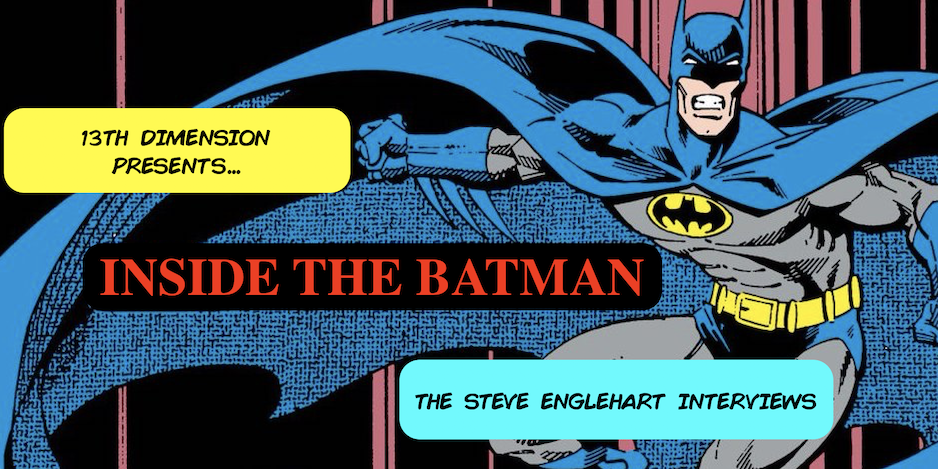
Welcome to INSIDE THE BATMAN: THE STEVE ENGLEHART INTERVIEWS, an issue-by-issue exploration of the greatest Batman story of all time — Steve Englehart and Marshall Rogers’ seminal 1977 Detective Comics run. The complete story has finally been collected for the first time in hardcover — and in the way Englehart envisioned it — in Tales of the Batman: Steve Englehart. With the book newly released, the time is perfect to go back and look at the story from every conceivable angle. Each weekend this summer, we’ve delved into a single chapter of the 8-issue saga, with full commentary by Englehart himself — the most complete analysis of the landmark storyline ever published. For the INDEX of individual entries, click here.

And now we’ve come to the epilogue. We’ve hit every issue in the run — you can click here for all the links — but to put a Bat-bow on it, I asked Steve Englehart to give me his impressions on the arc’s memorable covers. We go over each below — plus he answers an offbeat question about the sounds of comics.
Dig it.
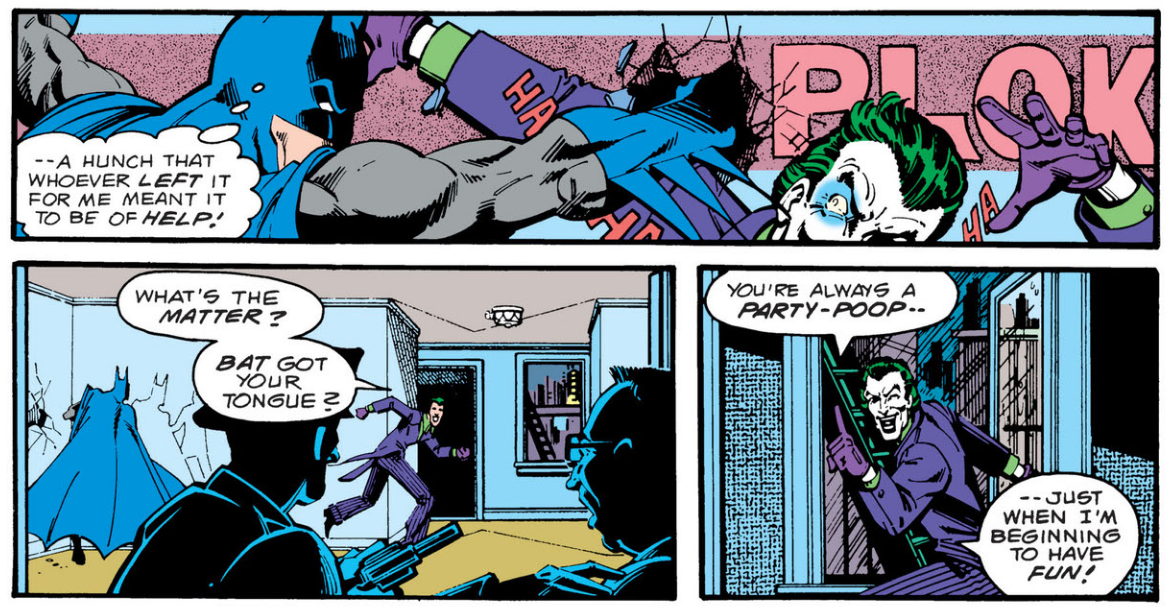
Detective #476
Dan Greenfield: I have one nerdy process question for you before we wrap up. One of the things that I’ve always loved about this story all the way through, particularly the ones illustrated by Marshall, were the sound effects. I always thought that it was a really underrated part of the story because unlike “Biff!” or “Zap!” or “Pow!” — the typical ones — they really were like onomatopoeias.
I think of the panel (in Detective #476) where the Batman throws a punch at the Joker, misses, and his fist goes through the wall and it says “Plok.” Is that something you come up with as a writer? Is that something that the letterer comes up with? Was that Marshall? There’s a few of them in this story that always stayed with me as really great sound effects.
Steve Englehart: Thank you, that is me. I tried to write onomatopoeic. I’d done that from the start. I tried to make the sounds sound like they’re supposed to sound. I mean sometimes I’ll do “Bam!” in a thing because that’s the thing. But yeah, if you’re going to put your fist through a wall, there’s a sound to that. I used to have people fall into water and it would go “ploog,” because that was funny, but that’s what it sounds like when you fall into water. I like doing sound effects.
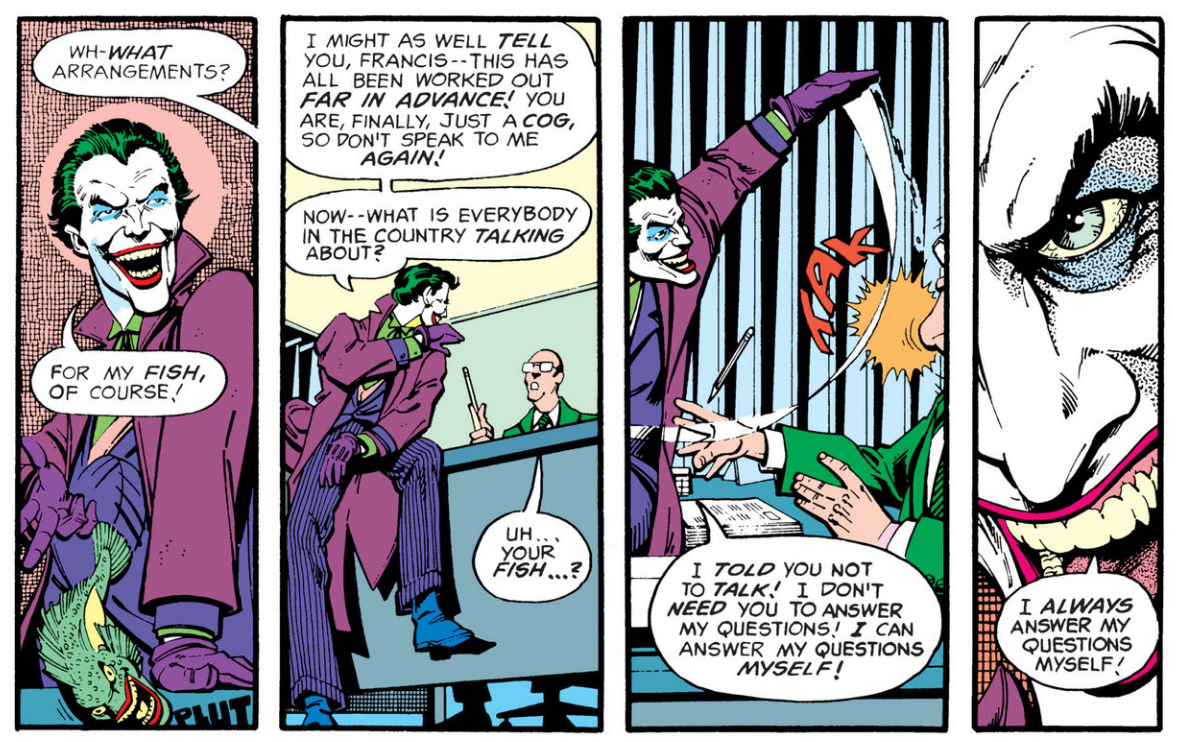
Detective #475
Dan: I like when the Joker puts his fish down on the desk and it just says “plut.” But you see it, and it just adds a texture that I think is overlooked.
OK, so I’ve got a little bit of a lightning round to wrap up with. One of the things that we haven’t discussed is the covers, which are in and of themselves, particularly a couple of these, iconic. And they’ve become representative of Batman in general. Most were done by Marshall, a couple of them were done by Jim Aparo. Tell me whatever comes through your mind when you see each of these covers.
The first one is Detective #469.
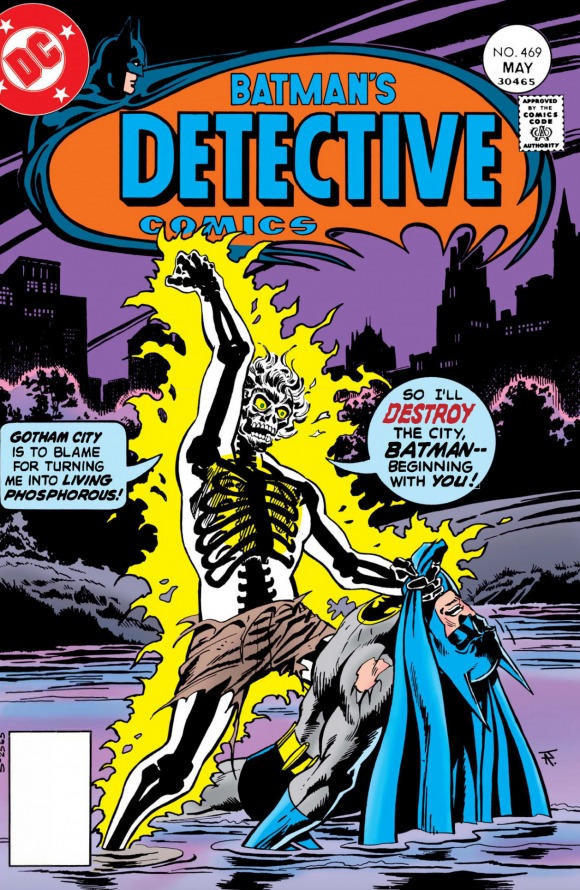
Jim Aparo
Steve: Yeah, that’s a good shot of Doctor Phosphorus. At that point I was just creating a villain, and I got sort of a standard comic-book cover. I don’t say that to denigrate Jim Aparo or any of that stuff. There’s the villain and here’s Batman, it’s pretty straightforward. A good looking villain I think, and nicely done by Jim.
Dan: And then you get the followup, #470, the second chapter.
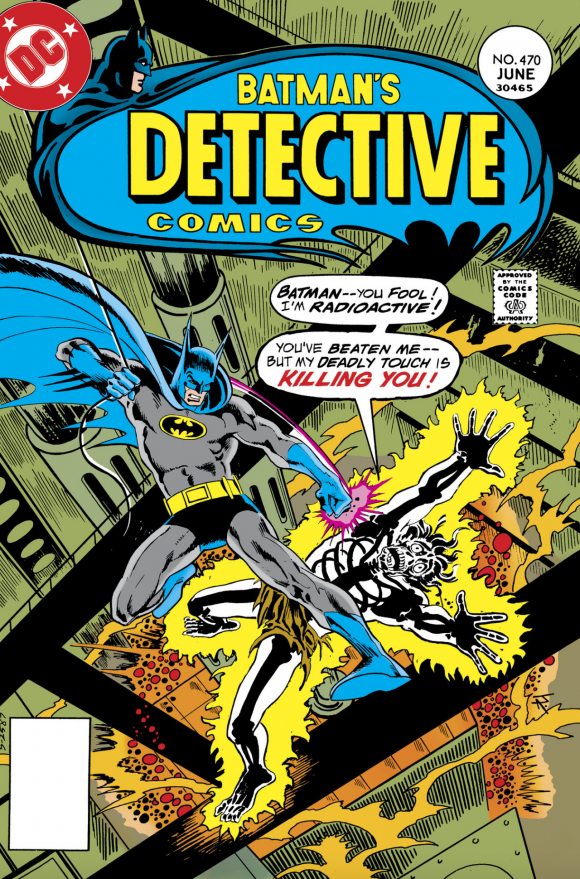
Jim Aparo
Steve: Yeah, kind of the same. That again looks a little… standard, shall we say?
Dan: Then things kind of go in a radically different direction with the next chapter, Detective #471, which is one of the most compelling and yet grotesque covers.
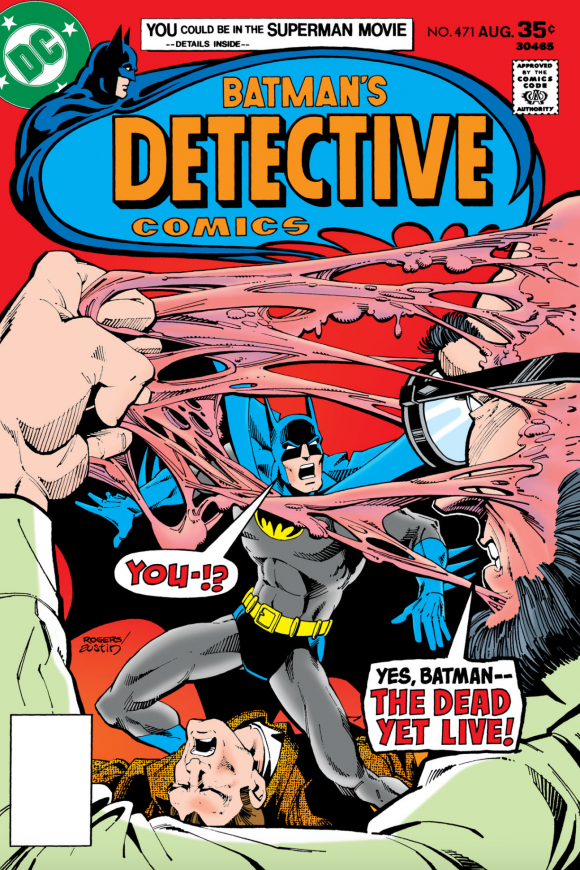
Marshall Rogers pencils, Terry Austin inks
Steve: Yeah. Yeah. OK, so now Marshall’s involved, and that’s not generic, shall we say. Lots of stuff in comics is generic and for good reason — because it works. In the actual book, Hugo Strange takes off a mask, and then he takes off a mask. But on the cover he’s like, ripping it off and it’s all oozing across. I mean that’s, again, whenever we’re talking art here, I had nothing to do with, I never had anything to do with covers. So that’s maybe Joe Orlando doing a layout and Marshall going with it, I don’t know. Maybe Terry Austin knows about that. That again is Marshall sort of stretching out.
Dan: And I love the way Batman is framed in between the strands of goo. Then we’ve got this one, Detective #472, another classic.
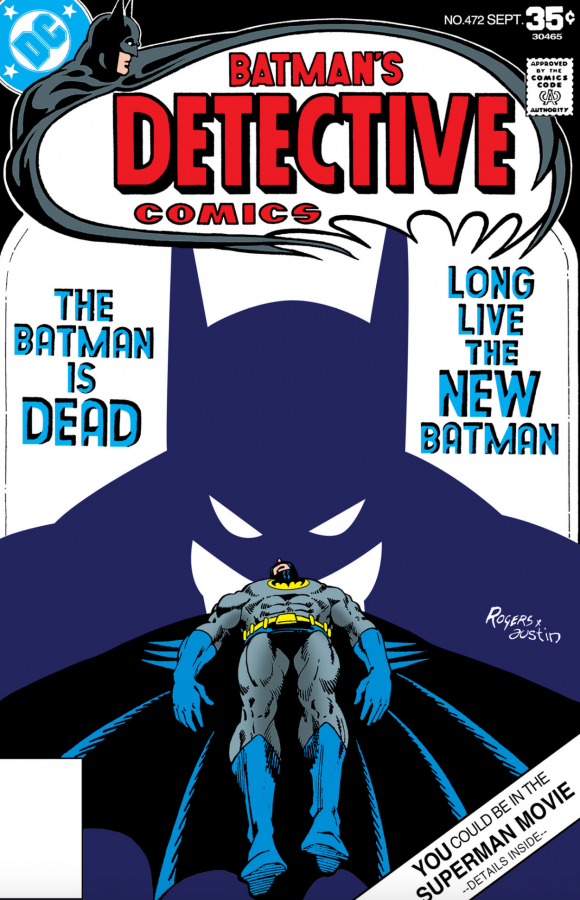
Rogers and Austin
Steve: It’s a good looking piece of art. It’s not so much saying, “Look here’s a new supervillain, or here’s the evil stuff the supervillain is doing,” it’s just Batman. Just ambience again, that’s what we’re selling here — ambience as much as anything.
Dan: Next one up is the Penguin cover, Detective #473.
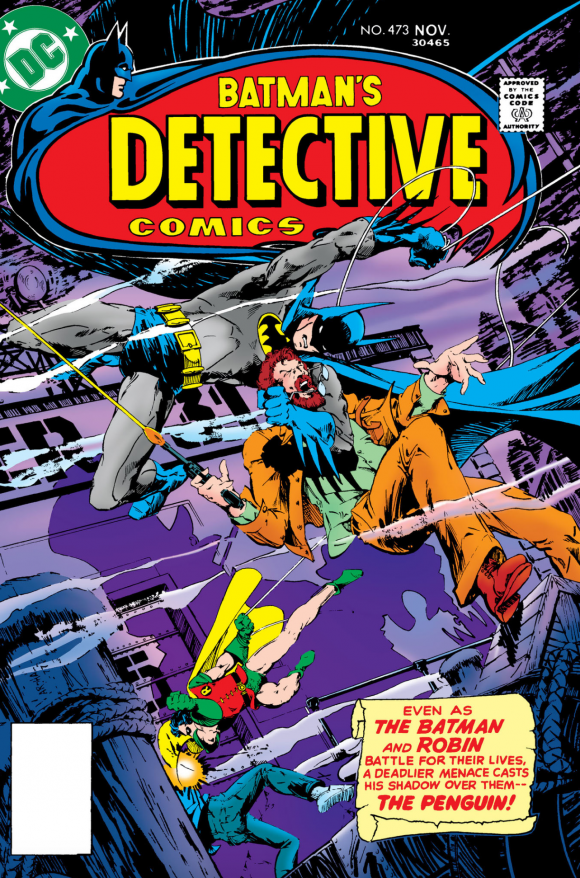
Rogers
Steve: Yeah, that’s more of a generic cover, people fighting, doing stuff. Doesn’t say much about the Penguin per se.
Dan: And this one, Detective #474.
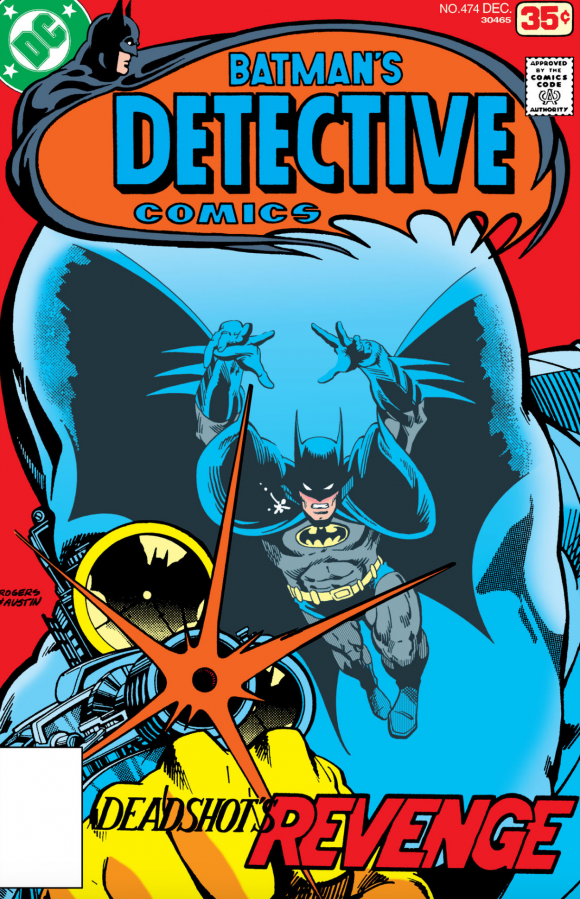
Rogers and Austin
Steve: Now there’s, you know, Marshall redesigned that costume and now he’s making full use of it, the fact that the face reflects just — that’s a good looking cover.
Dan: Now this is probably the most famous cover of the entire run, Detective #475.
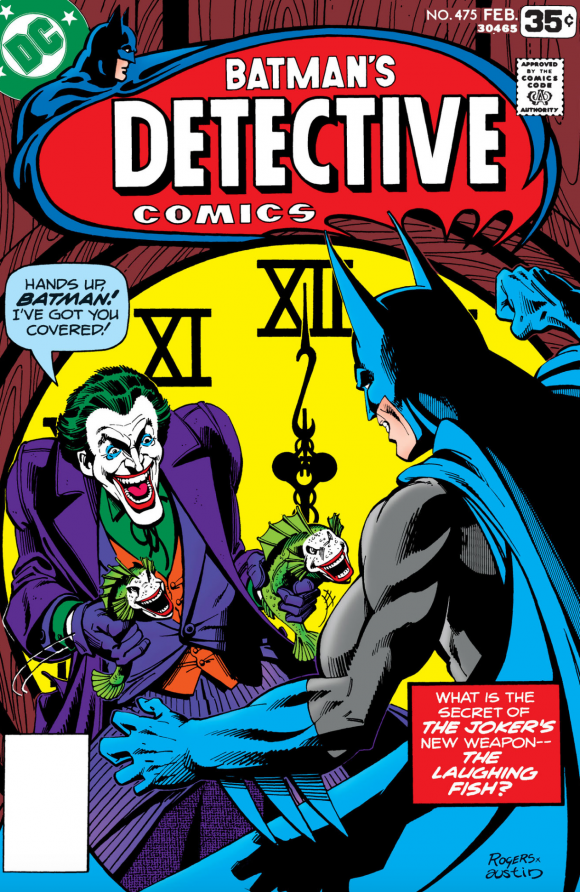
Rogers and Austin
Steve: Yeah, the fish. Yup! That’s… there’s nothing to be said about that, really. You’ve got the Joker, you got the Joker fish, you got the clock. It’s clearly 3 a.m. or whatever time it is on that thing, but it’s nighttime and there’s weird stuff going on. The Joker again looks happy. He looks crazy, but he looks happy. He’s not a tortured soul, he’s enjoying this, he’s having a great time with this.
Dan: What I like also about the clock is the implication that there’s a deadline. It doesn’t ever say it, there’s nothing even on the word bubble or in the box, but to me it adds an extra level of tension just by the fact that it’s in front of a clock. I don’t know if that’s intentional or not, maybe I’m reading too much into it. And then there is of course the last one, this might actually be my personal favorite, Detective #476.
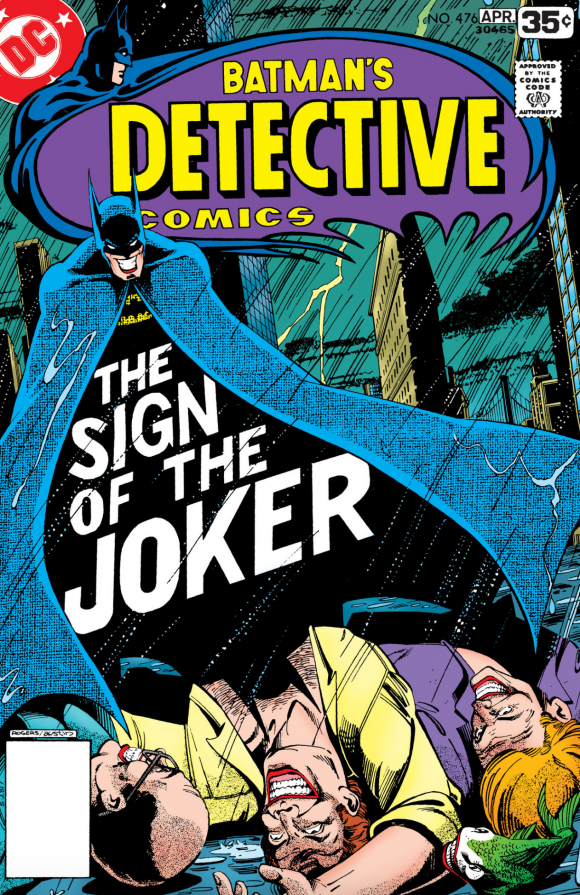
Rogers and Austin
Steve: Now Batman has gone crazy apparently. It’s like, “What’s that all about?”
So much of comics, of anything, of life, is existential. It’s just like, I took my best shot, I got lucky. Marshall took his best shot, Terry took his best shot, Julie gave us all the support that we needed and all that stuff, and it all comes together.
That’s another thing that I find fascinating, in that when we did this stuff, we were just doing it. I mean we were all trying to do our best, everybody had goals and all this but we were just doing it. Len Wein would write something really good and you would appreciate it, or Neal Adams would draw something really well and you’d appreciate it and you’d say so and you’d talk to people. Meanwhile there was office politics going on and all these different things were happening while we got up every day and said here’s what I’m going to do today in the circumstances that I’m in. And now, it’s history. Now it’s all solidified.
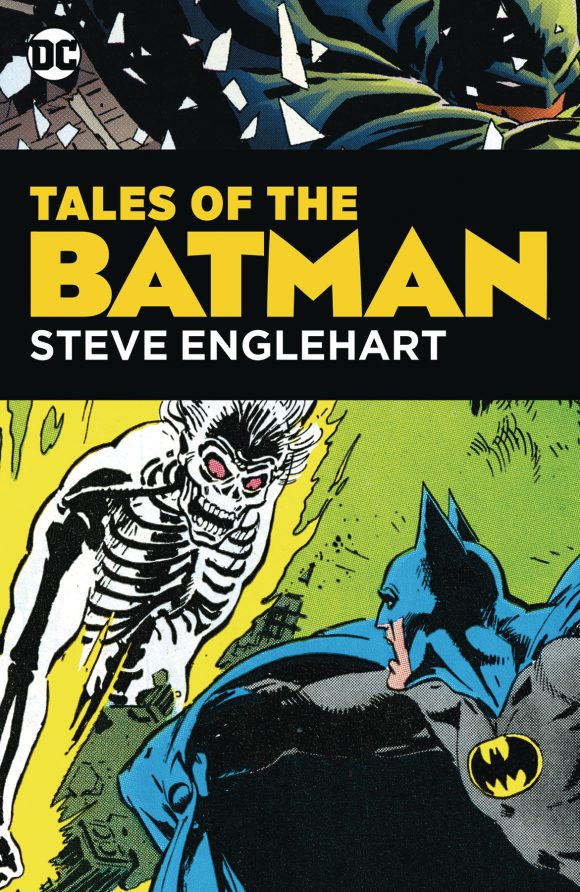
There’s only so many comics from the ’70s. There’s only so many people who wrote comics or did comics in the ’70s, and only so many of them are alive today and all that kind of stuff. It’s part of millions of peoples’ childhoods and lives and so on and so forth. But in the moment, you’re just doing it. The day that I realized it had now become history, that these were like — and we’ve been talking for a while, you’ve got to know where my head’s at on this — but I mean the day I realized that this is a classic story, this is a story that keeps getting reprinted, that people keep talking about, it’s like, “Cool! I’m glad I did that!” But in the moment you’re just like… (makes straining sound), “Can I do three pages where people just sit in a car and talk to each other? Let’s give it a shot! Let’s see how that works.”
So it’s gratifying but it’s weird to be historic in that sense. Again, if I may say, I wrote so many different series that there’s historical stuff littered through Doctor Strange or through Green Lantern or through the Avengers. It’s like, I was just enjoying myself and trying to get paid.
I enjoyed going back through this again. I’m usually happy with what I did… so it’s fun for me to go back and look. I’ve read these stories 5 million times, but I haven’t focused in on them to this extent for quite a while so it was fun for me.
—
MORE
— INSIDE THE BATMAN: THE STEVE ENGLEHART INTERVIEWS Complete INDEX. Click here.
— BONUS: 13 GORGEOUS BATMAN PAGES — A TERRY AUSTIN Birthday Celebration. Click here.

August 23, 2020
If I may, to Steve, Terry and Marshal I say, “thank you”. It was a moment but what a moment it was.
August 23, 2020
This has been an incredible multi-part review.
August 23, 2020
The best thing DC/Warner Media could do right now with their current re-organization of the company is to bring Steve Englehart on as the Batman group editor.
August 23, 2020
Nothing wrong with the original covers, but Rogers’ cover work on the 1980s reprint series (SHADOW OF THE BATMAN) is even better. Worth checking out!
August 23, 2020
What I love about Englehart’s art, besides just being good overall, is that pop art quality that is somewhat reminiscent of Warhol and Lichtenstein. His style makes reading or looking at the stories all the more enjoyable.
August 24, 2020
Thanks for putting this series together. I really enjoyed it! When I was a kid, at that time, I made infrequent trips to the drug store and 7-11. I never had as much pocket change to buy as many comics as I wanted. I don’t know whether I saw these and didn’t buy them or never saw them. I did have Detective 468 and 479, but none in between. Missing out on these issues the first time may be the biggest regret of my comic buying time.